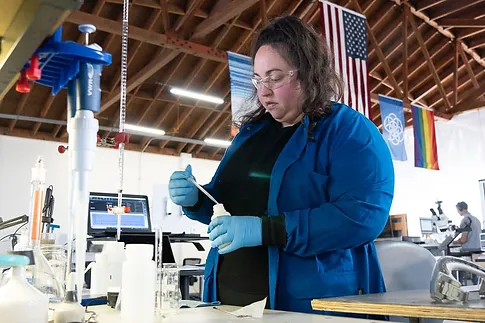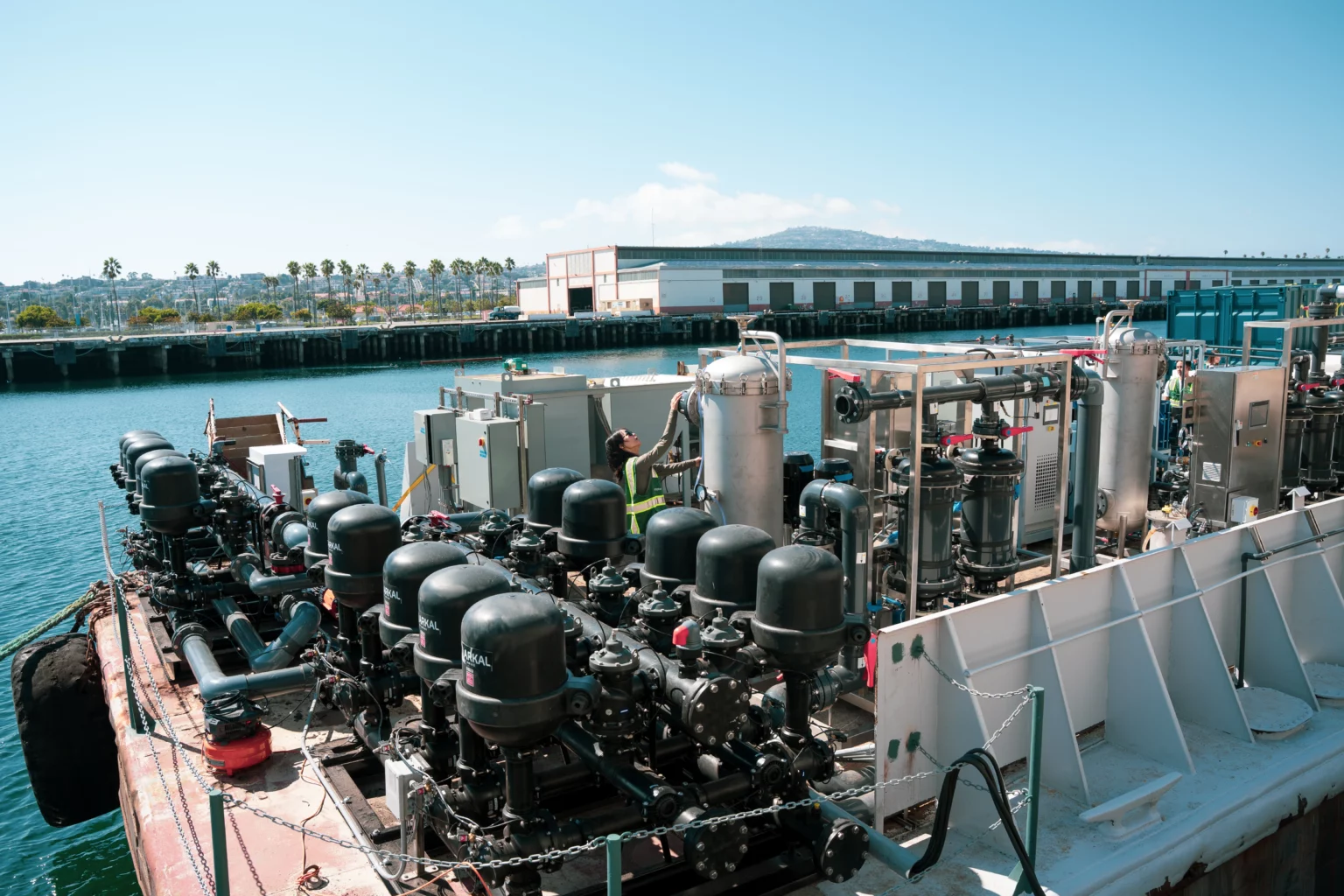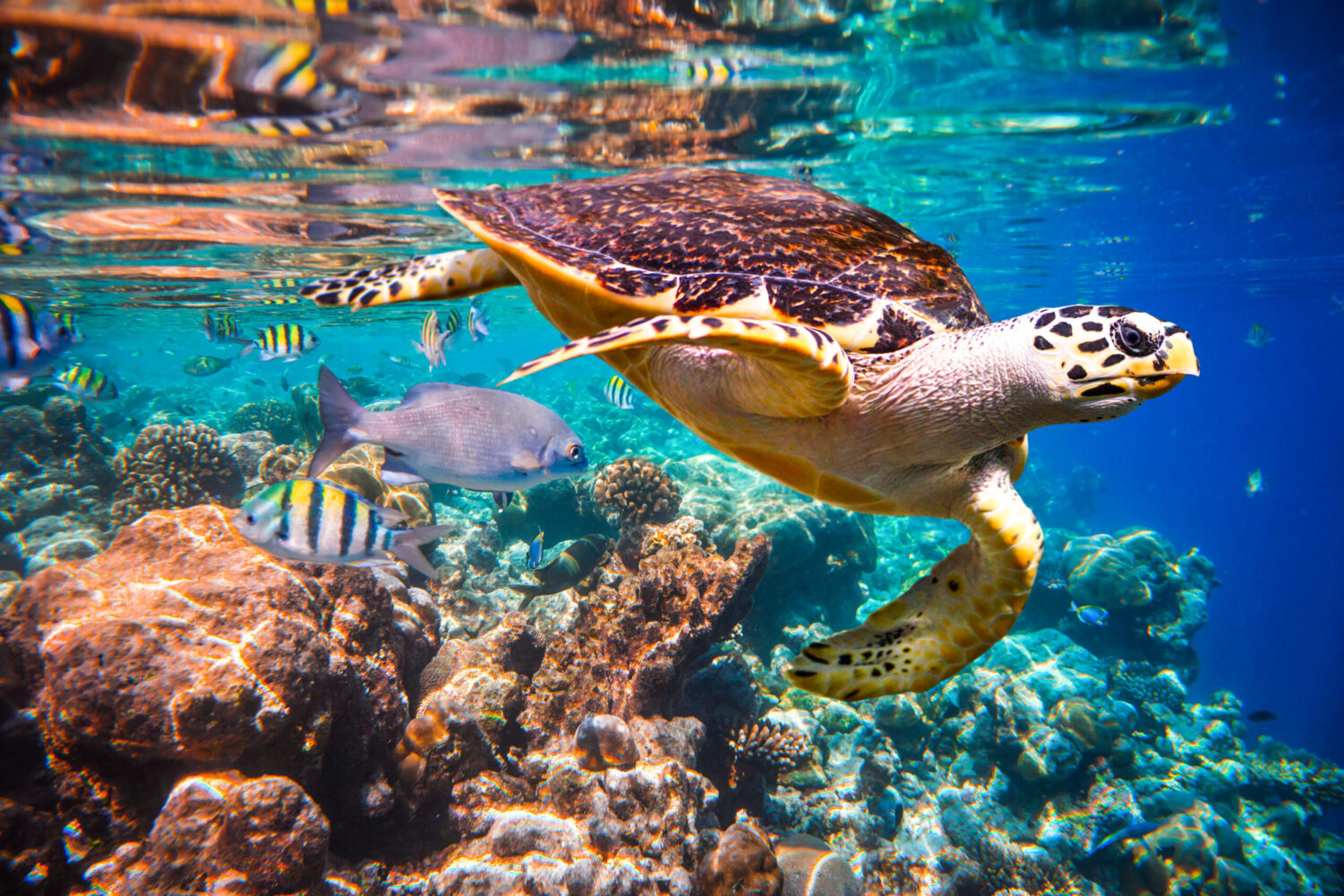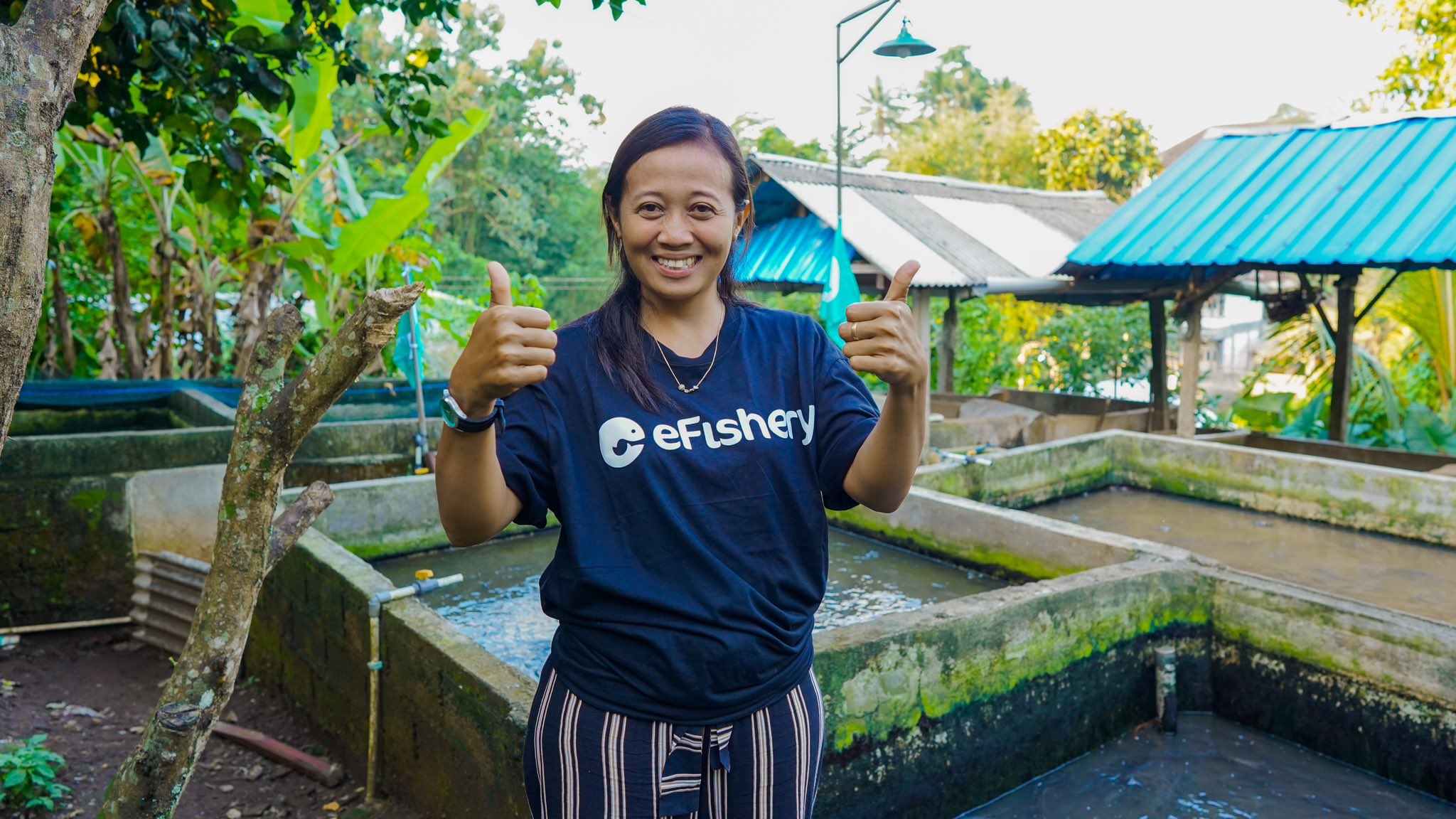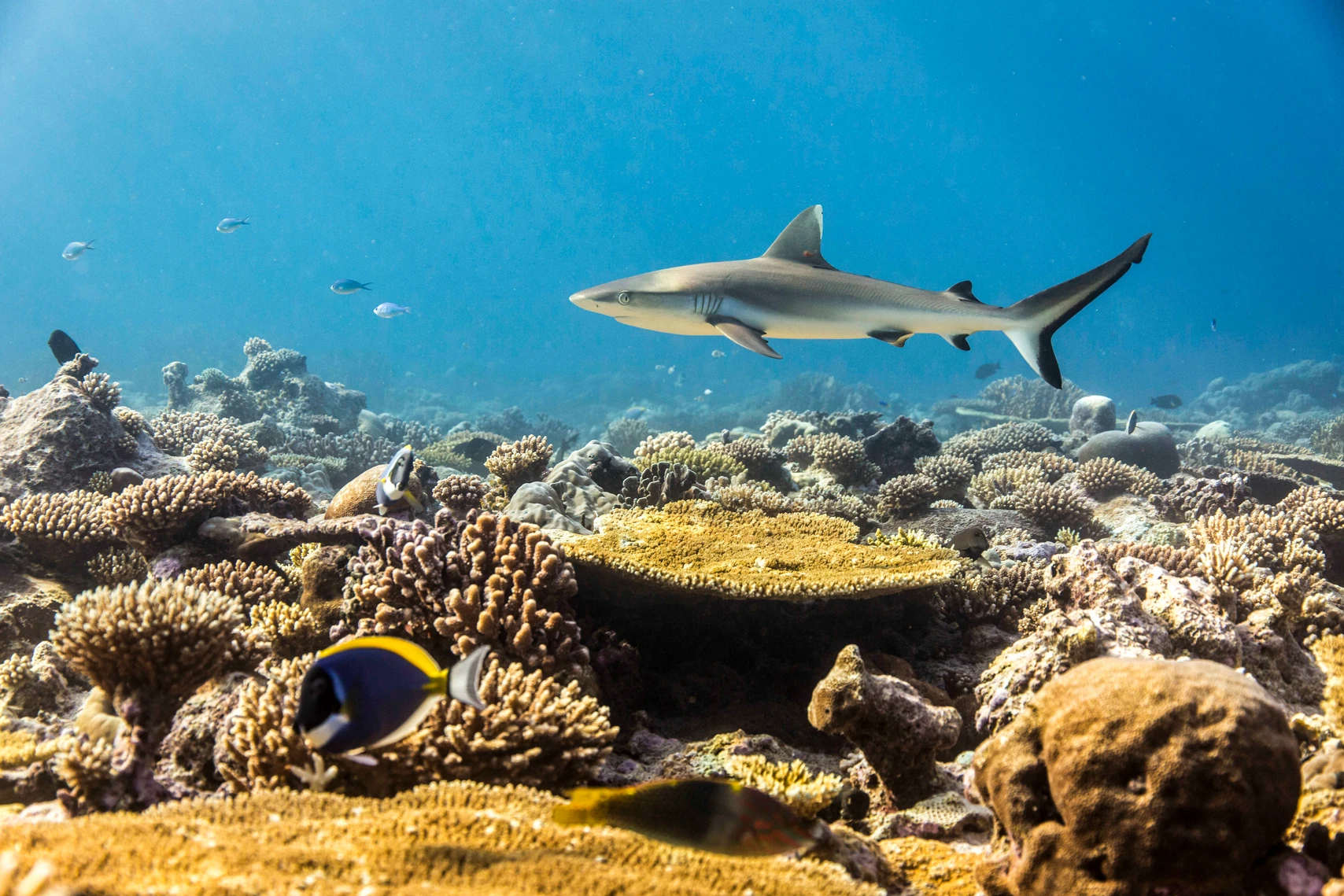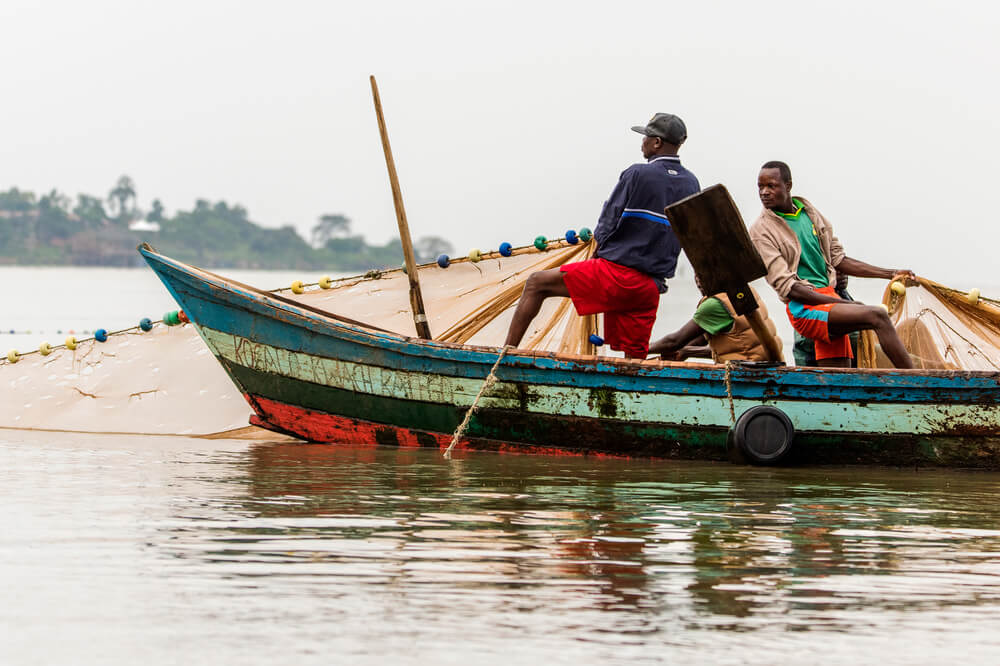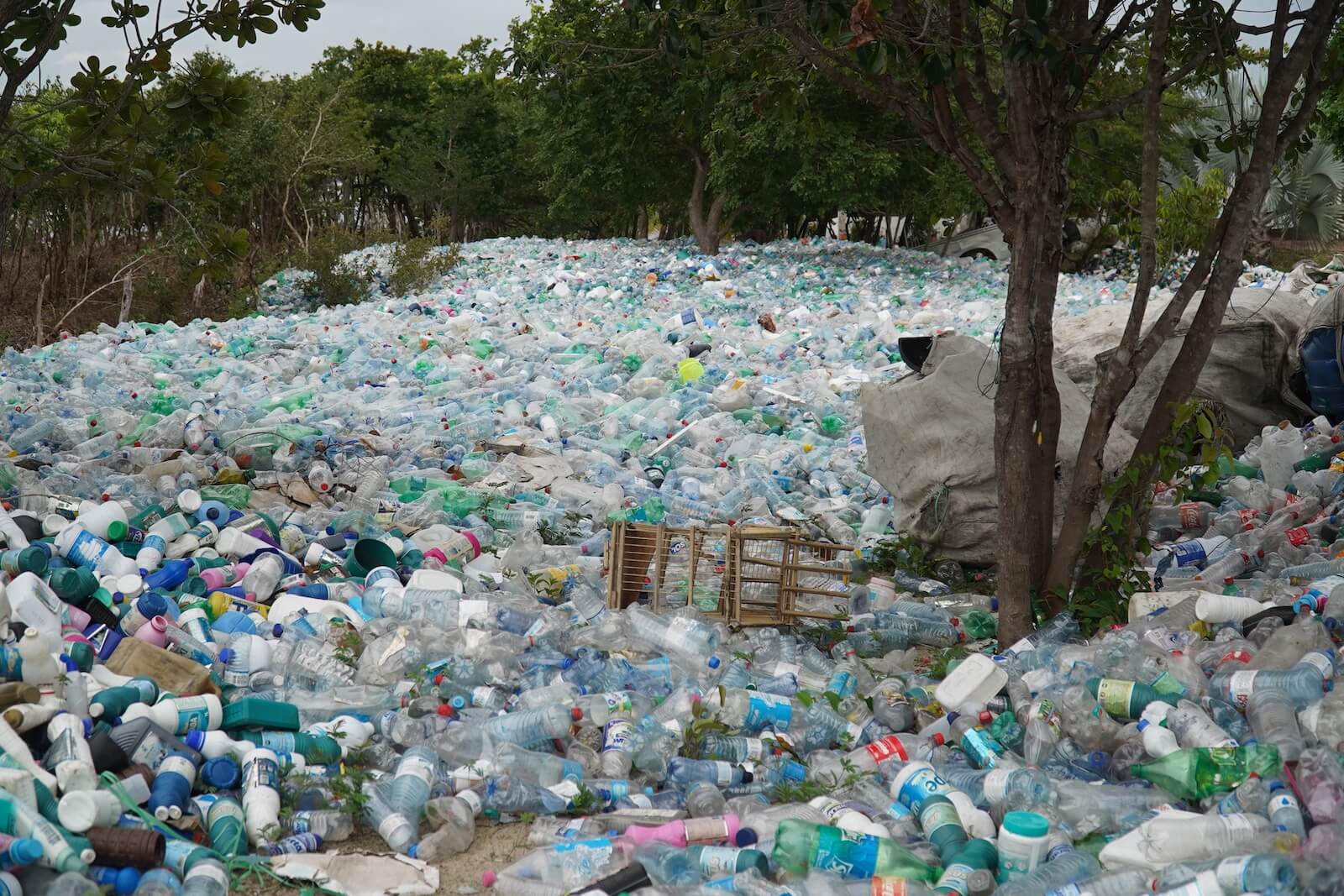Reefs are investable. As the value of the world’s disappearing coral reefs becomes abundantly clear, so too does the value of techniques and initiatives that show promise in regenerating the precious ecosystems.
After a decade of studies foreshadowing the bleaching, death and collapse of the fragile reefs, global worst-case scenarios are being exceeded.
Coral reefs, some of the most diverse and valuable ecosystems that support thousands of underwater species from oysters, clams, crabs and sea urchins, are the cornerstone of an ocean economy of billions of people and trillions of dollars.
If countries are only starting to wake up to the challenge, private capital has been even slower to mobilize. For example, roughly 2,000 garbage trucks of plastics are dumped into oceans, rivers and lakes daily, according to the United Nations. Coral reefs are more likely to be contaminated by plastic waste and other human-derived debris than other marine ecosystems.
Nations are finalizing a global treaty to end plastic pollution. A committee will convene in South Korea later this year for a final meeting to figure out how to finance the implementation of the treaty. Can private equity deliver?
“The blue economy is a huge market and there are investment opportunities,” says Dale Galvin, who was appointed by Connecticut-based Pegasus Capital Advisors, via his impact investment advisory firm Deliberate Capital, to manage the Global Fund for Coral Reefs. The fund is building a portfolio of 15 to 20 investments in wild-caught fisheries, aquaculture, hospitality and “the circular economy” to protect vulnerable coral reefs and coastal communities, particularly in the Global South.
“We need to change the trajectory of how companies and businesses and communities and governments interact with the oceans in a much more sustainable way,” he said in a Q&A with ImpactAlpha.
The count of private equity and venture capital funds focused on the blue economy has grown dramatically from a decade ago, to at least 30 funds, according to a new report by BlueInvest, an initiative launched by the European Commission. Ocean-related dealflow has tripled from 456 deals between 2012 and 2017 to 1,347 between 2018 and 2023.
Galvin called the Global Fund for Coral Reefs the first commercial-scale, private equity impact fund dedicated to the “blue economy.” The fund combines grant capital for programmatic and technical assistance with a blended-finance fund for institutional investors. The Green Climate Fund, the UN-backed climate adaptation and mitigation fund, is providing a first-loss tranche of up to $125 million to de-risk investments for private investors.
The Global Fund for Coral Reefs has received over $250 million in grant and equity commitments against its $750 million target. Investors in the grant fund include: Monaco Foundation, Bloomberg Philanthropies, Paul G. Allen Family Foundation and the federal governments of Germany, France, Canada, the UK and the US. Commitments to the commercial fund include: Minderoo Foundation and Builders Vision, which also committed to the grant fund.
“We have good tailwinds for all of those strategies at the macro level,” says Galvin, an early investor in the ocean economy with the Meloy Fund, a sustainable fisheries fund he launched in 2017 to back fisheries and aquaculture enterprises in Indonesia and the Philippines.
“The trick is we need to get in there now and invest in real companies to have the opportunity to change the trajectory of those threats before it’s too late,” he added.
ImpactAlpha caught up with Galvin to talk about building a portfolio of ocean-based investments in the Global South.
ImpactAlpha: Give us a high-level overview of the Global Fund for Coral Reefs model. What makes the fund unique?
Galvin: The Global Fund for Coral Reefs’ core mission is to direct attention and investment towards one of the most overlooked aspects of nature—our oceans. Coastal areas, teeming with coral reefs and a rich diversity of marine life, are crucial for supporting the livelihoods of climate-vulnerable communities, especially in the Global South.
We utilize a blended finance structure that enables partners in our coalition to take on distinct roles, each deploying capital with varying risk-return profiles. The UN launched the GFCR with philanthropic capital from governments, driven by foundations, member states, UN agencies, organizations and the private sector.
On the other end of the capital spectrum Pegasus Capital Advisors manages a private equity investment fund, designed to deploy commercial-scale capital to promote new blue economy solutions and transition finance that creates business value while bolstering the resilience of coral reefs and the communities that depend on them.
We stand out in a variety of ways. Firstly, as the largest coalition, and with a large target-size investment fund, we can invest in growth stages of businesses in the blue economy previously neglected by impact capital. Also, unlike most other ocean-focused funds, we specifically target the most critical area where people and nature intersect—the territorial or coastal waters. This area includes coral reefs, mangroves, and seagrass beds essential for biodiversity and ecosystem benefits, as well as supporting food security and providing jobs for climate-vulnerable coastal communities in the Global South.
ImpactAlpha: Please share more about the Global Fund for Coral Reefs’ investment strategy. How does the fund leverage its investments and grants for maximum impact?
Galvin: We target climate resilience and adaptation, integrating blue carbon mitigation to actively participate in key, large and fast-growing industrial sectors of the blue economy that have an opportunity to contribute to ocean health. GFCR distinguishes itself by applying these strategies on a scale previously unseen.
We channel significant investments into significant players in their regions and countries, and as necessary encourage them to adopt sustainable behaviors across their supply chains. This strategy creates credible products to sell to brands in the West focused on reducing ESG risks and delivering sustainable, and traceable offerings to their consumers.
Our investment approach is complemented by partnering with the UN’s grant facility, as part of a comprehensive ecosystem approach. We invest capital and collaborate with our partners to deploy grants that magnify our impact. By complimenting our investments with program funds from the UN, we achieve a level of impact that a single fund could not accomplish alone, particularly when dealing with a common pool resource like the oceans.
ImpactAlpha: What does the pipeline of investment opportunities look like for the Global Fund for Coral Reefs?
Galvin: Our pipeline is incredibly robust. We’ve spent years cultivating networks, relationships, and a proven track record, particularly in emerging markets. I founded the Meloy Fund in 2017, one of the early funds dedicated to ocean conservation, which came at a time when few were exploring this critical part of natural capital. The GFCR is a much larger and more diverse evolution of that fund, with access to the networks and pipeline we had been establishing over many years.
Additionally, we’re looking at a neglected category for impact investing. We engage across the spectrum of business size and stage where there are substantial investment opportunities. These companies are not only seeking capital but also expert advice on achieving maximum sustainability and ESG compliance, not just because it’s the right thing to do but an existential requirement for value creation and growth. We are well positioned with the necessary capital and partnerships to assist these companies in meeting their objectives.
Many who perceive limited opportunities in the blue economy often concentrate on designing new-fangled and complex financial instruments or strategies to deploy capital where it has historically not been needed or perhaps even desired. In doing so, they overlook existing and fast-growing trillion-dollar industries such as fishing, aquaculture, tourism, waste management, and sustainable shipping. These sectors are massive, encompassing many thousands of companies, each with the potential to innovate their business models towards sustainability. When we think of impact investing, we view these established markets through the lens of sustainability, revealing a plethora of opportunities.
ImpactAlpha: Where are you seeing the most attractive investment opportunities?
Galvin: Larger coastal economies, such as Indonesia, the Philippines, Brazil, and Mexico, naturally present more opportunities due to their geographic scale. They support a greater number of coastal communities, fishers, and farmers, contributing to a more expansive blue economy. While smaller islands and countries also offer significant opportunities, these typically require more effort to unpack and are often developed in collaboration with other partners. Additionally, we have our team on the ground in Southeast Asia and Latin America shaping these efforts and uncovering proprietary dealflow..
We have tremendous opportunities in all sectors. Economically, the food and agriculture sector presents great potential for profit and innovation, while for instance in waste management, achieving significant returns can be more challenging. That said, we’ve invested in an ocean plastic recycling initiative with an excellent business model. However, such ventures are currently scarce and predominantly in their nascent stages within undeveloped markets. In more mature sectors like food and agriculture, there are established companies with proven revenue streams and business models that still have significant room for growth, making these opportunities easier to identify and access.
ImpactAlpha: Tell us about some of your deals to date.
Galvin: We have invested in Carbonwave, a processor of sargassum seaweed. Sargassum, a type of brown algae, has grown out of control as it traverses the Atlantic Ocean annually and poses a significant challenge. This algae as it decomposes emits methane and other toxic substances, affecting both communities and marine environments. Carbonwave has developed an innovative method to harvest sargassum from coastal habitats and convert it into valuable products, including an effective biostimulant for agriculture and an emulsifier for cosmetics.
We have another investment in Parley for the Oceans, an ocean plastic brand and upcycling company that runs ocean cleanups and develops community infrastructure in countries around the world, including the Maldives and the Dominican Republic. They creatively address marine plastic pollution through collaboration with governments, industries, scientists, schools, and consumers, pull it out of the ocean and partner with brands like Adidas and LVMH to create high-end products to continue to support the removal of ocean plastics and replace virgin plastic. This process not only supports the ongoing removal of ocean plastics and capacity building, but has also proven to be profitable. Parley has successfully leveraged both its collection efforts and product branding to enhance awareness and boost sales.
ImpactAlpha: How does the GFCR evaluate the impact of its investments?
Galvin: Every time we do a deal, we evaluate how it contributes to our impact targets, from business as usual through the course of our investment. Over the investment holding period, which spans on average five years until exit, we evaluate our impact across the entire ESG spectrum. This includes assessing the amount of high-value seascape we can enhance through better management practices for, say, fisheries management or coral reef restoration and protection. Additionally, we focus on the well-being of local, coastal communities by determining the number of employment opportunities we can create and the extent to which these jobs can improve household incomes and income stability.
ImpactAlpha: The blue economy is valued at at least $2.5 trillion annually. Make the case for what’s at stake.
Galvin: Today, the ocean faces tremendous threats as a direct result of climate change, and we’re paying for it economically. With warmer ocean temperatures contributing to rising sea levels, we witness the migration of both animals and humans, food security risks, and heightened weather damage. The ocean also faces severe local threats including overfishing and destructive fishing, waste and pollution and ocean plastics, unfettered coastal development, and tourism. We invest in these areas because addressing these challenges is essential for enhancing the resilience of coastal communities and the natural infrastructure on which they rely.
Given the immense threats and potential losses at stake, we cannot postpone action and wait for the next technological revolution. We must invest now to mitigate these threats. The blue economy represents a vast market with numerous investment prospects. So in addition to supporting creative, new solutions, we need to move quickly to change the trajectory of how companies, businesses, communities, and governments engage with the oceans to ensure a sustainable outcome.
The opportunities and technologies we need to make these changes exist now. Luckily, the behavior is becoming increasingly rewarded in the market, from all sides – investment, consumer, and government regulation. We have solid momentum for these strategies at a macro level, but we need to act now. It’s our job to find and invest in these existing or potentially impactful companies that have the opportunity to change the direction of these threats before it’s too late.




